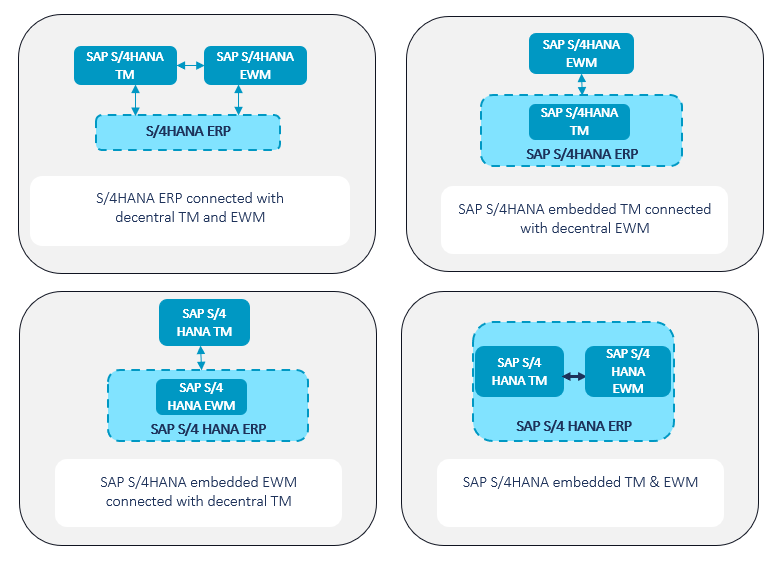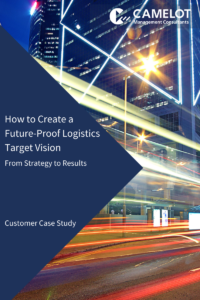As per SAP’s application roadmap, legacy transport & warehouse applications (based on SAP Business Suite) will be outdated by 2030. Hence, many SAP customers are looking forward to select fitting SAP transport & warehouse applications. This article sheds some light on the available options, to enable customers to choose the right SAP transport & warehouse applications for integrated supply chain processes.
A Gradual Shift to SAP S/4HANA
There has been lot of buzz recently around the transition to SAP S/4HANA, SAP’s ERP application for the future. This transition will affect your supply chain execution landscape as legacy transport and warehouse management (TM & WM) applications which are based on SAP Business Suite are not to be continued. There are some key dates announced by SAP regarding end-of-maintenance that one needs to know, to see the full picture.
As per SAP’s roadmap, mainstream maintenance for SAP Business Suite (core applications) will end in 2027. SAP is offering a possibility for extended maintenance till 2030, with additional fees. To support a smooth transition to SAP S/4HANA, SAP also provides an option called “compatibility scope”, that allows customers to use certain SAP ECC applications in a SAP S/4HANA installation at no extra cost. The option to use the compatibility scope will be valid till 2025. For some specific applications, the compatibility scope will be valid till 2030. Compatibility scope is valid for Logistics Execution – Transportation (LE-TRA) application.
With this date in mind, the transition to new TM & WM applications becomes more urgent. The article outlines future TM & WM applications and advises on key landscape modeling options.
Key SAP Applications for Modeling Transportation & Warehouse Processes
With mainstream maintenance for SAP Business Suite coming to an end, there is a gradual shift from legacy transport management and warehouse management applications based on the SAP Business Suite to new TM & WM applications based on S/4HANA. SAP released new TM & WM applications in S/4HANA, which gives customers wide implementation options such as SAP S/4HANA embedded versions, side-by-side version, cloud versions etc. To best manage the interconnected process steps of transportation and warehouse processes, companies need to formulate the right system landscape evolution path.
Let us have a look at the main variants for SAP transport and warehouse applications. The intention is to understand the key application variants, without dwelling on deep technical functionalities.
Future SAP transportation application
The following graphic shows the main SAP transportation application variants including their scheduled end of maintenance:

- LE-TRA (on SAP Business Suite): SAP LE-TRA (Logistics Execution – Transportation) is part of the SAP Logistics Execution application and in use at many organizations to handle basic transportation processes. Mainstream maintenance will end in 2027 but LE-TRA can be used in compatibility scope till 2030.
- SAP TM (on SAP Business Suite) as a stand-alone system provides advanced transportation management features in order management, planning, execution, freight settlement, analytics features etc. SAP TM is used both by shippers and forwarders for advanced TM functionalities. As per SAP roadmap, no new releases are planned after TM 9.6 version, and mainstream maintenance will end in 2027.
- SAP TM (on S/4HANA) will be the future TM application variant that SAP provides with new features and simplifications. It comes in three landscape options:
- TM embedded on S/4HANA where the transportation application will be part of SAP S/4HANA ERP. Based on the required transportation capabilities, a customer can choose between “basic shipping” or “advance shipping”.
Basic shipping: This option covers basic transportation processes and is included in the S/4HANA license.
Advance shipping: This option provides an advanced feature set for order management, planning, execution, freight settlement, analytics etc. It covers transportation processes of medium to high complexity. The “advance shipping” option requires an additional license.
- SAP TM (on S/4HANA) as a decentral system provides the option to use the TM system as a separate system, which could be further integrated with a (separate) ERP system. For an implementation as a decentral application variant, a full-scope license of SAP S/4HANA Supply Chain for Transportation Management will be required.
- SAP TM (S/4HANA Cloud) provides an opportunity to move the transportation application to a private cloud (SAP Transportation Management for SAP S/4HANA Cloud, private edition) or public could (SAP S/4HANA Cloud for Transportation Management).
Future SAP Warehouse Management Applications
In the future, the main SAP warehouse applications variants present themselves as follows:

- SAP LE-WM (on SAP Business Suite): SAP LE-WM (Logistics Execution – Warehouse Management) is part of the SAP Logistics Execution application. It provides capabilities to manage basic warehouse processes. Mainstream maintenance for LE-WM will end in 2027.
- SAP EWM (on SAP Business Suite): SAP EWM (Extended Warehouse Management) provides advanced capabilities to manage complex warehouse operations such as managing batches and serial number to bin level, handling deconsolidation, labor management etc. As per SAP roadmap, no new releases are envisioned after product version EWM 9.5, and mainstream maintenance will end in 2027.
- SAP EWM (on S/4HANA) provides EWM capabilities on SAP S/4HANA either as embedded sub-variant or as decentral sub-variant.
- Embedded EWM on S/4HANA provides EWM capabilities in two possible sub-variants as basic & embedded versions. The basic version is included as part of S/4HANA license while advanced version requires an additional license.
- SAP EWM (on S/4HANA) as a decentral system provides an option of a EWM application installation on a separate S/4HANA system, which could be connected to an ERP system. For the implementation of the decentral application variant, a separate license will be required.
- Stock Room Management (on SAP S/4HANA) provides basic warehouse functionalities for small warehouses with low complexity. This variant is included in SAP S/4HANA licenses and has been available since SAP S/4HANA release 1909. Further development in Stock Room Management is not envisioned by SAP. It is also worth to note that not all functionalities of LE-WM are available in Stock Room Management, for example Yard Management or Wave Management are not covered.
- SAP WM (S/4HANA Cloud) provides options for cloud deployment of warehouse management in a private or public cloud.
- A private cloud option is also known as SAP EWM for SAP S/4HANA Cloud, which can be used as a basic version (with the license included in SAP S/4HANA Cloud, private edition subscription) or an advanced version with an additional license.
- A public cloud option is also known as Warehouse Management in SAP S/4HANA Cloud.
Key Landscape Modeling Options for SAP Transport & Warehouse Management
Selecting the right landscape is generally a customer-specific topic, which requires a convergence of multiple factors. Some of the crucial factors are the organization’s IT strategy and vision, the application’s roadmap as announced by SAP, operational costs (including licenses), current and planned transport and warehouse volume etc. If future demands on transport and warehouse management are likely comparable to currents needs, organizations might consider the following options:
- Customers currently using ECC legacy applications with simple warehouse and transport requirements, as part of S/4HANA migration should consider implementing
- S/4HANA TM embedded (in basic version), and
- for WM applications either Stock Room Management or EWM embedded on S/4HANA (basic version).
- Customers currently on TM standalone or EWM standalone applications (with intermediate to advanced warehouse and transport requirements), should consider
- S/4HANA TM embedded (advance) version or S/4HANA TM decentral version, and
- S/4HANA EWM embedded (advance) version or S/4HANA EWM decentral version.
The decision to choose between an embedded version or a decentral version should be based on multiple factors, including the migration dependency of ERP application, the number of ERP system to be connected, downtime dependencies (for ERP – TM – EWM applications) etc.
Some of the key options for TM & EWM application landscape are depicted below.

Customers with a future focus on cloud migration of their ERP application can opt for cloud version of TM & EWM applications. In general, public clouds are deployed as multi-tenant systems and based on a SaaS (Software as a Service) model, which is attractive for customers who aim to reduce their dependency from hardware and IT staff to manage the implemented application. Private clouds, in comparison, are deployed as single-tenant systems (cloud access only for the customer). SAP private cloud variants provide a “Digital Supply Chain” offering for modular implementation.
Setting the Stage Right for Future TM & WM applications with integrated process design
As noticed, there are multiple variants available for SAP Transportation & Warehouse applications (embedded versions, decentral version, cloud versions). Also, releases of new SAP product versions provide latest functionalities and ample opportunities for better landscape modeling. Hence, it is highly recommended to get in touch with experienced implementation partner, to get right landscape design for your supply chain execution processes.
If you need further recommendations on how to design your future warehouse and transportation landscape you are welcome to reach out to us or have a look at our logistics services at our website: Digital Supply Chain – Logistics – Camelot ITLab (camelot-itlab.com).

